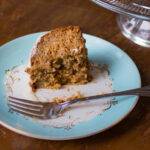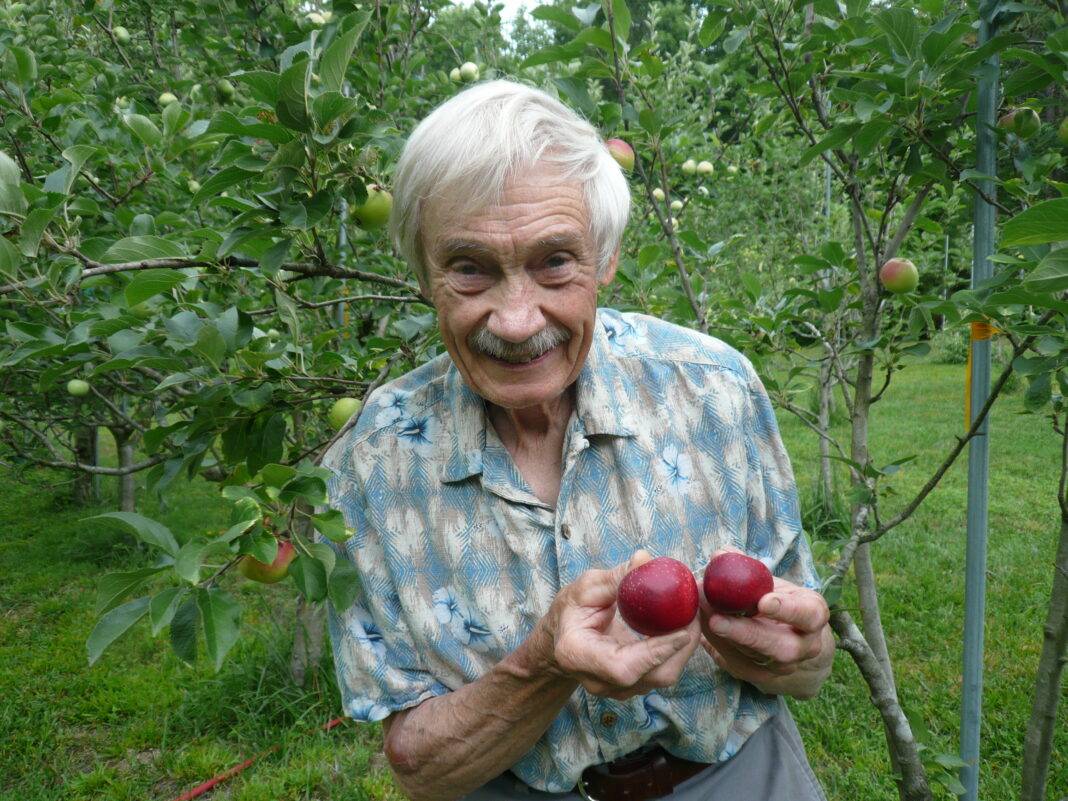The so-called “apple hunter” has personally tracked down more than 1,000 forgotten varieties of our favorite fall fruit.
When Tom Brown retired in 1999, he didn’t have plans for a second career or even a time- consuming hobby. But that all changed just a few months later when the former chemical engineer found himself at a farmers market in Winston-Salem, North Carolina staring at a display of heirloom apples. “Until that moment, I hadn’t really spent much time thinking about apples,” he laughs. “But I found that I was fascinated by the colors, the textures, the tastes and the names of all those heritage apples.”

It might have stopped there, had the vendor, Maurice Marshall, not mentioned apple hunting, a pastime that takes hobbyists through backyards, old orchards and fallow farms in search of forgotten apple trees bearing varieties of apples considered lost or even extinct. “At one point he mentioned that he’d been trying for years to locate an apple called a Harper’s Seedling, a variety that, historically, had once flourished near where I grew up in Iredell County, North Carolina,” Brown says. “Without really thinking about it, I found myself offering to help.”
As he searched for the elusive Harper’s Seedling, Brown spent his evenings with the 1905 edition of the US Department of Agriculture’s The Nomenclature of the Apple, where he was shocked to learn that there are about 7,000 varieties of apples, each with its own distinguishing characteristics. The extra time studying was worth it: By the time he finally recovered the Harper’s Seedling, Brown had found and identified hundreds of additional forgotten varieties as well.
Brown spent his evenings with the 1905 edition of the US Department of Agriculture’s The Nomenclature of the Apple, where he was shocked to learn that there are about 7,000 varieties of apples, each with its own distinguishing characteristics. The extra time studying was worth it: By the time he finally recovered the Harper’s Seedling, Brown had found and identified hundreds of additional forgotten varieties as well.
Once he’d identified exactly what variety of apple he had, Brown’s next step was to keep it from becoming extinct. Though it might seem logical that he could simply collect and plant seeds from each apple he discovered, apples don’t work that way: their seeds can’t be counted on to produce an apple that looks or tastes like its parent. “Apples are not what is called ‘true to seed,’ which means if you plant an apple seed, the tree that grows will produce an entirely new variety of fruit,” he explains. Apples are cross-pollinated — like humans, they take on the characteristics of both “parents.” Consequently, “Grafting is the only way to preserve each specific variety,” Brown says. And so, he set about taking cuttings from each tree and, once he returned home, grafting those cuttings onto existing apple trees.
In the nearly 25 years since Brown began his quest, he has traveled through North Carolina, Virginia, Tennessee, Kentucky, Georgia, and West Virginia and has personally recovered more than 1,000 apple varieties. “Apples are a huge part of the agricultural history of this area,” he says. “At one time, it was one of the top apple-producing regions in the country.” (Today, that honor goes to Washington state.)

Brown explains that during the 1800s, as volunteer apple trees cropped up on family farms and in orchards and yards, landowners often found themselves with a unique fruit so good it was worth going to the trouble to graft a cutting to ensure a long-term supply. “Older people I speak with tell me that most families had three or four varieties of apple trees in their yard, and they were all different from what their neighbors grew,” he explains. “Though the families are long gone, those apple trees are still producing.” And while not necessarily commercially available, apples from some of the trees can still be bought at roadside stands.
These days, Brown spends his days continuing to seek out and preserve rare heritage varieties of apples. At Heritage Apples, his two-acre orchard in Clemmons, North Carolina, he raises more than 700 varieties of rare and endangered apples. He sells apple trees for about $20 apiece to encourage people to create “mini preservation orchards” in their yards. His plan seems to be working: In the past three years, he’s received about 5,500 inquiries, mostly from individuals interested in buying a tree.
“When you find a rare tree, you’re getting more than a cutting or an apple,” he says. “You’re getting a piece of history.”
Want an apple tree? Or to learn more about apple varieties and Brown’s hunting? Check out his website.
Print
Recipe: Big Mama’s Apple Cake
Description
Named for Tom Brown’s wife’s grandmother, this apple-packed cake is surprisingly fragile. Always the engineer, Brown says that slipping a greased, foil-covered cardboard roll over the tube pan’s center tube before unmolding the cooled cake will help keep it intact until you can get it to the cake plate.
Ingredients
- 3 cups tart apples
- 1 1/4 cups oil
- 1 teaspoon baking soda
- 2 teaspoons baking powder
- 2 cups sugar
- 3 eggs
- 2 1/2 cups all-purpose flour
- 1 teaspoon salt
- 1 teaspoon vanilla
- 1 teaspoon cinnamon
- 1 cup chopped walnuts or pecans
- 1 teaspoon allspice
Instructions
- Peel and chop the apples fine; set aside.
- Pour the oil, sugar, and eggs in a bowl and beat well.
- Sift the flour, salt, baking soda, baking powder, and spices together.
- Add the flour mixture to the creamed mix, and add the vanilla.
- Fold in apples and nuts, and pour into a tube pan.
- Bake in a 350°F oven for one hour or until a toothpick comes out clean.


